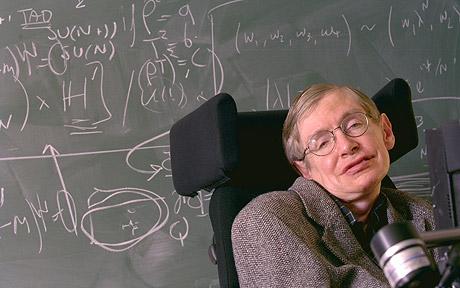
Stephen Hawking, perhaps the most famous living scientist in the world, was born on the 8th of January 1942. After a first degree in natural science at University College Oxford, he moved to Cambridge in 1962 where he completed his PhD studies. By 1963 he was diagnosed with motor neuron disease and given two years to live. He’s now 75 years old, communicates using a single cheek muscle attached to a speech-generating device, and he continues to work and lecture internationally. His doctoral thesis “Properties of expanding universes” was published in 1966 and was released online on October 23rd. Whilst it is now available online for everyone to read, it might not be your preferred bedtime story.
“By making my PhD thesis Open Access, I hope to inspire people around the world to look up at the stars and not down at their feet; to wonder about our place in the universe and to try and make sense of the cosmos. Anyone, anywhere in the world should have free, unhindered access to not just my research, but to the research of every great and enquiring mind across the spectrum of human understanding.” Said Professor Hawking, adding that “Each generation stands on the shoulders of those who have gone before them, just as I did as a young PhD student in Cambridge, inspired by the work of Isaac Newton, James Clerk Maxwell and Albert Einstein”.
Hawking’s thesis effectively illustrates that the Big Bang theory was physically possible. So how did young Stephen Hawking show it could really be possible? In order to explain this, we need some background physics.
“Each generation stands on the shoulders of those who have gone before them, just as I did as a young PhD student in Cambridge, inspired by the work of Isaac Newton, James Clerk Maxwell and Albert Einstein”.
In 1915 Albert Einstein published his theory of General Relativity and introduced the idea of “space-time”: the framework of our universe which combines three-dimensional space and one-dimensional time. Einstein’s idea showed gravity to be a “twist” of space and time, where the curvature in the space-time framework is caused by the presence of mass or energy, which creates a “dip” into an otherwise flat framework. Einstein’s equations were subsequently used to investigate what happens to space-time in different situations. Black holes, for example, are objects in which all matter is concentrated into a single point, where the gravitational effects are so strong that they cause the space-time curvature so be so extreme that not even light can escape. The density at the centre of a black hole is infinite, making it a “singularity”. Hawking’s thesis final chapter focuses on the idea of such “singularities” for the entire universe.
Over a large scale, the contents of the universe must be evenly distributed and look the same in every direction. The “Robertson-Walker metric” is the solution to Einstein’s equations which is able to satisfy these conditions by describing a universe in which space itself is expanding. In the 1920s Hubble showed that other galaxies are moving away from us, therefore suggesting that the universe really is expanding. So, if the universe is expanding, in the past there must have been a time where it was smaller and denser, where all the matter and energy must have been concentrated in a single point. This is the basis of the Big Bang model.
At 24 years old, Hawking mathematically proved that singularities were expected features of nature and not just a theory, demonstrating that general relativity allowed for a universe that began in a singularity. The Big Bang theory.
